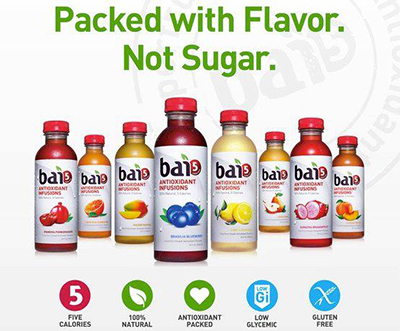Putting political opinions and view
points aside, one campaign slogan from this recent election season seemed to
perform better than the other. Ray Hennessey makes this claim in his recent
article titled “Why 'Make America Great
Again' Beat 'Stronger Together'”, which was published on Entrepreneur.com this
past week. Here, Hennessey discusses the five reasons why Donald Trump’s ‘Make
America Great Again’ and its #MAGA hashtag out performed the marketing efforts
of Hillary Clinton’s ‘Stronger Together’.
The first reason that Hennessey discusses is the call to action that
#MAGA produced. Comparing it to Nike’s ‘Just Do It’ slogan, Hennessey links the
two and describes how the slogan almost comes off as an order and is the
voter’s responsibility. Contrasting it with ‘Stronger Together’, which
Hennessey describes as an attempt at being all-inclusive, yet lacking the call
to order that is important with marketing messages. While I do not support the
campaign style and platform that Trump ran on, I do agree with Hennessey here
who suggests that the ‘Make America Great Again’ slogan seemed to motivate
people more so than ‘Stronger Together’.
The second factor that attributes to Trump’s marketing success is that
the slogan is so simple with its execution. There was no real design team or
image with hidden messages or symbols to take into consideration. Trump’s
slogan was infamously seen as plain font on a red or white baseball hat or
simply on a bumper sticker. There was nothing to be unsure about or confused
about with this slogan. Simply, if you wanted to make America great again, you
knew which slogan to look for. With ‘Stronger Together’, Hennessey explains how
the slogan was inherently more ambiguous. The ambiguity comes from the idea
that they need strength, as if to criticize the previous administration but not
to go all the way since she was a part of it. This more passive approach
apparently did not resonate with all voters and came off as another message
trying to be politically correct, which contrasts the type of rhetoric that was
common with Trump. In the end, it appears that the Clinton slogan was less
blunt and more passive than the in your face strategy by Trump.
The third factor that Hennessey describes is that Clinton’s slogan
campaign was not nearly as definitive as Trump’s. There was no question with
Trump on what his slogan message was. Everyone knew it was all about ‘Make
America Great Again’. Clinton used multiple different “sub-slogans” like, “I’m
With Her”, “Fighting for Us”, and “Breaking Down Barriers.” By having all these
messages at once, it can muddy the waters and make your overall campaign seem
less grounded and more all over the place. We have all seen marketing campaigns
where there was too much going on and thus lost part of its impact. This ties
in with the next factor, which Hennessey states was social media.
With social media, Clinton was not
able to make her main slogan ‘Stronger Together’ a massive hit. While she had a
lot of success on social media, it was with her ‘I’m with Her’ slogan. By not
capitalizing off her main slogan, it added ambiguity to the marketing campaign,
which was not helped by the success of #MAGA with Trump supporters.
Interestingly enough, ‘Make America Great Again’ is not as social media
friendly on paper as something like ‘Stronger Together’, yet Trump supporters
organically abbreviated it to #MAGA. Clinton’s supporters were using a hashtag
of a slogan that their campaign essentially abandoned as its branding. Should
Clinton have been able to better use her slogans on social media, who knows if
the outcome would have changed.
The last and fifth factor that Hennessey
discusses is the idea of leadership. He felt that the ‘Stronger Together’
slogan attempted to be too inclusive and did not give off the definitive leader
feel that Clinton should have been going for. He also argues that ‘Stronger
Together’ was a direct response to ‘Make America Great Again’ and seemed almost
defensive, rather than direct and inspiring. Trump’s campaign seemed to be
going off the premise that he, as an individual was going to ‘Make America
Great Again’, compared to Clinton’s campaign, which was centered on a group
effort. Personally, I like the idea of being “Stronger Together’ and working as
a team, although apparently that was not the same sentiment with the way the
Electoral College votes panned out. How do you feel about the slogans from this
campaign? Do you agree with the claims made by Hennessey, or do you think the
Clinton’s marketing was stronger. Let me know what you think in the comments
section below.


